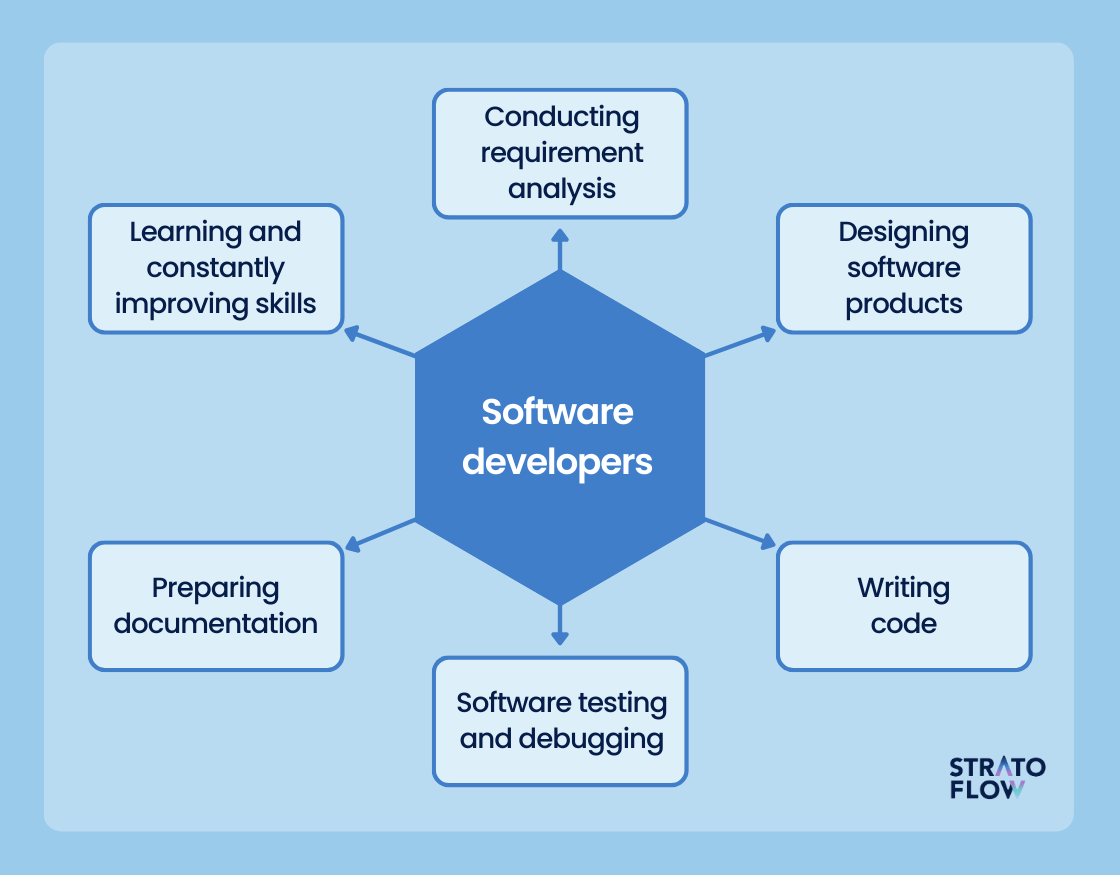Building Success with a Dedicated Development Team for Your Company Requirements
Wiki Article
Committed Developers vs. In-House Teams: Which Is Right for You?
The choice between utilizing dedicated designers and preserving an internal group is a considerable one that can affect the trajectory of your projects and total organization technique. Conversely, internal teams add to a natural business society and a nuanced understanding of long-lasting goals.Understanding Committed Designers
The growing need for specialized skills in the technology market has caused the development of committed developers as a practical remedy for lots of companies. These experts are typically gotten on a job basis, allowing business to utilize certain competence without the lasting commitment linked with full-time hires. Devoted developers are commonly embedded within a client's group, providing flexibility and scalability to fulfill project demands.This model permits companies to access a global skill pool, which is specifically helpful in a rapidly advancing technical landscape. Devoted programmers can be sourced from various geographical places, making sure that business can locate the right skill set at competitive rates. They usually bring a wide range of experience and expertise, having serviced diverse projects across different markets.
Moreover, dedicated programmers can concentrate specifically on the tasks handy, improving productivity and efficiency. They are geared up to integrate perfectly into existing process, working together carefully with in-house teams to accomplish job goals. This technique not just reduces the burden of recruitment and training yet additionally allows companies to remain agile, adapting rapidly to altering market demands and technical advancements.
Advantages of In-House Teams

Additionally, in-house groups tend to have a much deeper understanding of the firm's mission, worths, and goals. This positioning can enhance staff member engagement and motivation, as employee feel a lot more linked to their work and the organization's success. In addition, having a dedicated internal team permits much better placement of objectives and methods, as these members are regularly concentrated on the firm's concerns.
Internal groups likewise facilitate quicker decision-making processes, as they can respond much more quickly to challenges and modifications. The well-known relationships and familiarity with company procedures permit streamlined operations and reduced miscommunication. Inevitably, the mix of a natural culture, alignment with organizational objectives, and efficient interaction makes in-house teams a useful possession for several organizations, particularly those looking to cultivate lasting growth and innovation.
Cost Factors To Consider
When examining price considerations, both internal teams and devoted developers existing unique financial implications for companies. Involving specialized designers generally entails a pay-per-project or per hour rate model, which can be cost-effective for services with changing job needs. This strategy permits for versatility in scaling resources up or down, making certain that business only spend for the services they require.In comparison, in-house groups involve dealt with prices, including wages, advantages, and overhead expenses such as office and devices. While this version uses higher control and prompt accessibility of resources, it may bring about higher lasting costs, particularly if the work does not justify a full time personnel.
Moreover, companies ought to take into consideration the concealed costs associated with employment and training of in-house employees, which can better strain budgets. In many cases, the moment and sources invested on managing an internal team can take away from the company's core business goals.

Job Administration and Flexibility
Job administration and adaptability are important elements that affect the option between specialized programmers and internal teams. Committed teams commonly have developed procedures for taking care of projects successfully, leveraging particular methods like Agile or Scrum, which facilitate iterative development and adaptability.
Ultimately, the selection between specialized programmers and internal groups rests on the preferred degree of flexibility and the specific task administration needs. Business have to assess their operational dynamics, project intricacy, and source schedule to figure out which alternative aligns best with their tactical objectives.
Making the Right Selection
Picking the appropriate advancement approach-- committed programmers or internal teams-- requires a cautious evaluation of various factors that straighten with a business's tactical objectives. Conversely, internal teams can offer far better continuity and assimilation with existing workers.Next, examine your spending plan. Devoted programmers typically offer a cost-efficient option for short-term projects, while in-house teams may incur higher long-term expenditures as a result of salaries, benefits, and overhead costs. Assess the degree of control and collaboration wanted; internal groups commonly cultivate more powerful communication and positioning with business culture.
If instant results are essential, specialized developers can be onboarded quickly, whereas building an in-house team takes time for recruitment and training. If constant advancement is important, spending in an in-house team may produce better returns over time.
Verdict
Finally, the choice in between devoted programmers and in-house groups depends upon job requirements and organizational purposes. Devoted designers provide versatility and customized proficiency, making them appropriate for short-term campaigns. Alternatively, in-house teams cultivate a natural culture and much deeper placement with long-lasting objectives. Mindful evaluation of budget plan restraints, job timelines, and desired control levels is important for identifying the most suitable technique, ensuring alignment with strategic priorities and operational efficiency.The choice between using specialized designers and maintaining an in-house team is a significant one that can impact the trajectory of your tasks and total service method.Task monitoring and versatility are critical elements that affect the choice in between committed developers and in-house teams. dedicated development team.In comparison, internal teams may succeed in keeping a regular task monitoring structure due to their familiarity with the company's society and long-term objectives. Committed programmers frequently provide a cost-efficient remedy for short-term tasks, while internal groups may incur higher long-term costs due to incomes, benefits, and overhead expenses.In final thought, the choice between devoted developers and in-house teams hinges on project requirements and organizational objectives
Report this wiki page